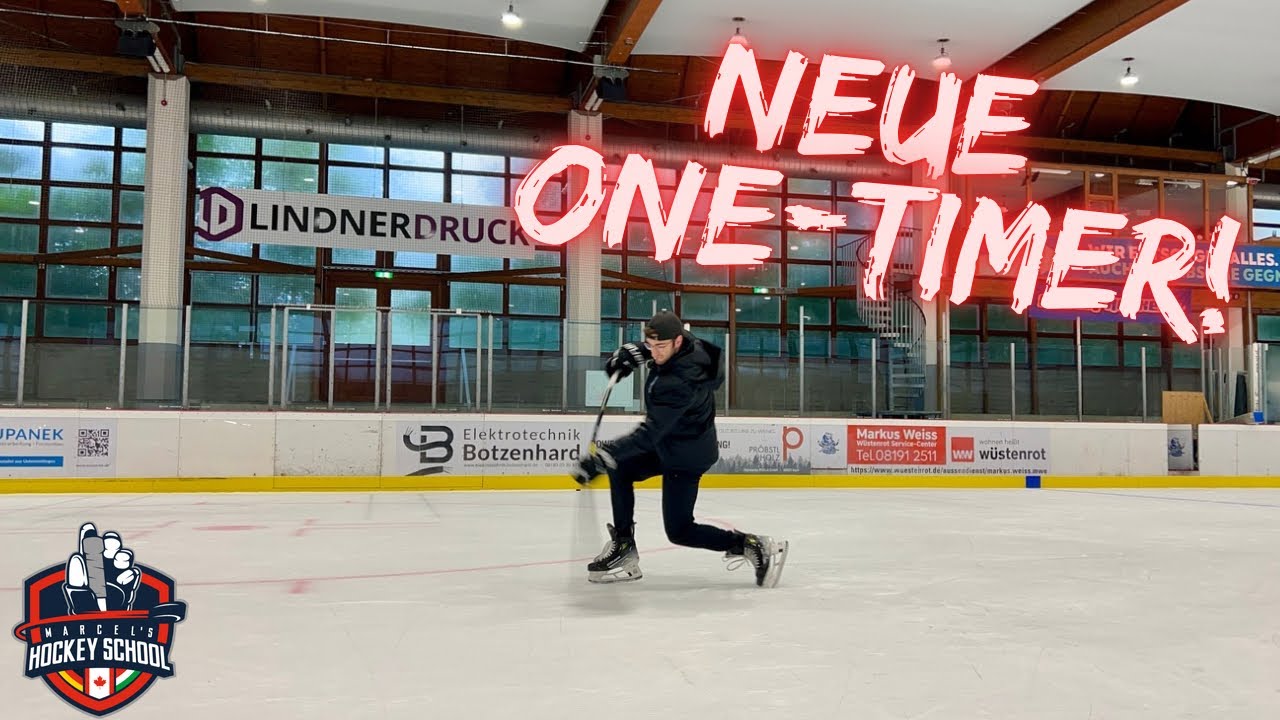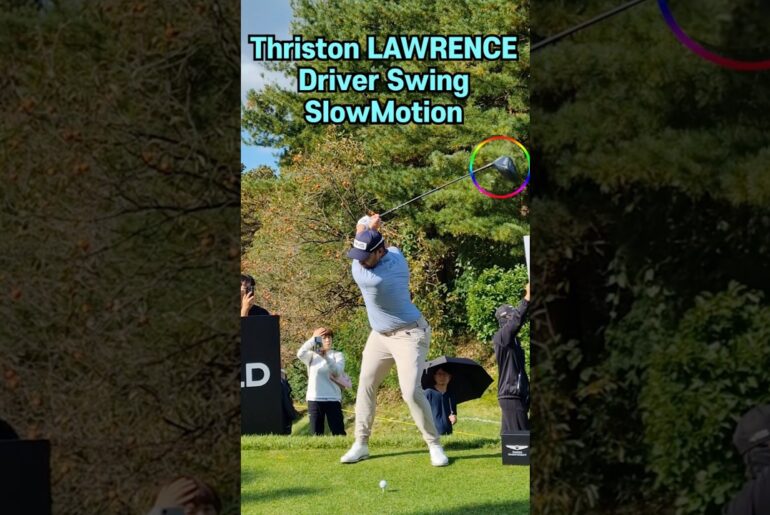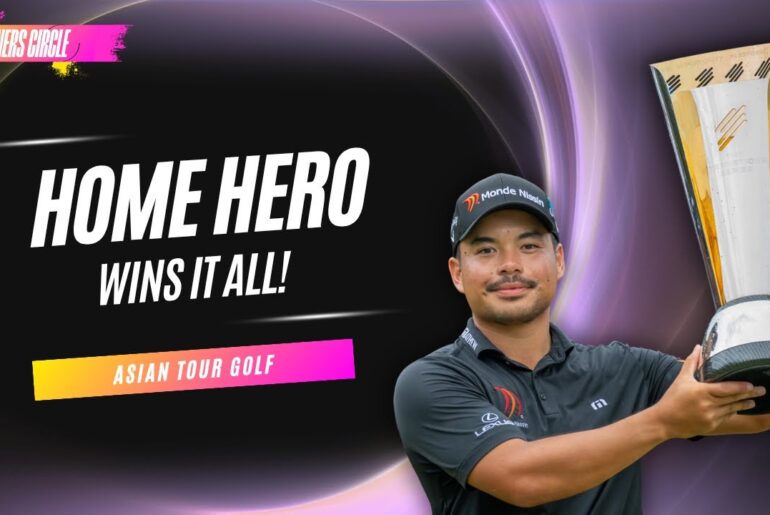Als ich noch Profi-Eishockey spielte, wurden die meisten Direktschüsse mit einer große Ausholbewegung ausgeführt. Das erzeugte zwar einen kräftigen Schuss, aber die Bewegungsablauf erforderte Zeit und war in Situationen, in denen man nicht viel Zeit zum Vorbereiten hatte, oft etwas ungeschickt.
Ich war zwar nie ein Spieler der bis zum Mond ausholte, aber mein Kumpel Mika „Wayne“ Reuter beobachtete mich vor ein paar Jahren bei einigen “One-Timer” und fragte mich, warum ich so hoch aushole. Ich dachte eigentlich, mein “Wind-Up” wäre doch recht klein, bis Mika mir zeigte, wie er brutale Schüsse abfeuern konnte, ohne seinem Schlägerblatt vom Eis zu heben.
Das hat mich wirklich zum Nachdenken gebracht und dazu geführt, dass ich meine Art, Direktschüsse auszuführen, geändert habe. Ich treffe sie jetzt konstanter und kann mich schneller an Situationen anpassen, in denen der Pass schneller oder weniger präzise kommt. Nachdem ich jetzt eine Weile so trainiert habe, habe ich auch nicht mehr das Gefühl, viel Power zu verlieren, obwohl ich mein Schläger nicht mehr so hoch hebe vor dem Schuss.
In diesem Video gehen Mika und ich auf die wichtigsten Punkte dieses „neuen“ One-Timers ein, der dir definitiv dabei helfen wird, mehr Tore zu schießen!
Viel Spaß beim Üben!
Jetzt Abonnieren!: https://www.youtube.com/c/marcelshockeyschool?sub_confirmation=1
Neuer Link um den GameChanger zu kaufen! Benutze den Promo Code MJ73 um 100€ Rabatt zu bekommen.
https://vdc61i-jq.myshopify.com?ta_aff=PF0ZFV3KZP
Cwench Hydration Shop 20% auf alle Produkte (nur in Europa):
https://www.cwenchhydration.shop/discount/Marcel20
Time Stamps:
00:00 Intro
00:44 Warum diesen neuen Direktschuss?
01:42 Mika zeigt es euch langsam
02:30 Technische Key Points!
04:21 Wann du noch groß ausholen kannst
05:55 Probieren wir es aus!
06:53 Was ich aus dem Training gelernt habe
Mein Marcel’s Kitchen Kochkanal: https://www.youtube.com/channel/UCyjzTAavfDqMEovkYftW1ZA
FOLGT mir online:
Instagram: https://www.instagram.com/marceljuhasz73
Facebook: https://www.facebook.com/marceljuhasz73/
Website: https://www.marcelshockeyschool.com
Marcel’s Hockey School: Training, Tipps und Tricks rund um’s Eishockey um euch zu helfen ein besserer Spieler zu werden!
Marcel’s Hockey School: hockey training drills and advice to help you become a better player!
#eishockey #marcelshockeyschool #direktschuss
Ok let’s do a few one-timers. Wayne give me a pass! Oh man… The next one, next one next one next one Yep! Wayne! Can you give me a bit better passes please?? Wait a bit. Man! Every time! -Ok, stop, stop , stop. stop, stop , stop. -I think we have to change something. “What?” Maybe you shot one-timers like this 15 years ago, but nowadays we do things a bit differently. Ok can you show me how it works? I’ll show you. Wayne is back, special guest at Marcel’s Hockey School. A new kind of one-timer. Let’s gooo!!! So Mika, a new way to take a one-timer. You actually showed this to me a couple of years ago. My backswing was never to the moon, but often up to here. But now we see a lot of players like yourself with a great one-timer who hardly have any wind-up, especially below the circles when they skate in. What’s up with that? Why is that so? Why do we do this? For me there are three reasons: the first one is that it’s simply much quicker to do. It means that when I’m skating on a 2 vs 1 or 3 vs 2, then I don’t have to open up towards the passer and wind up, this takes to long a gives the goalie more time to get over to the other side I can leave my skates pointing towards the net and that makes the whole movement much faster. I gives me the half a second that I need to get the puck into the net. Let’s show the viewers in slow motion how a one timer can look nowadays. Let’s do it! Ok Marcel is going to give me a few cross-ice passes like in a 2-1 or 3-2 situation, and I’ll try to put them in the back of the net! I get down low… Boom! Oh wow!!! That one was good! Always try to aim to the short side Get my weight really low. Sorry that one was a bit behind you. -The pass was a bit far behind but that’s ok. Just gotta try to get it off quickly. Yeah nice! So now to the technique, how do we do this? The most important thing with the one-timer is to get low and here you can, even though it’s not a must, bring your knee all the way down to the ice. A lot of players go all the way down, but however you do it, you have to get low. I have more power and more control The second point: How do I hold my stick? Actually just the same as I would normally hold it. I don’t hold it any lower, just totally normal. And I keep my blade closed. That’s quite a common mistake: keeping the stick blade open to raise the puck… …and you end up shooting a muffin. I keep the blade closed. Marcel give me another pass. The third point is that I want to put a lot of weight onto my stick before I shoot and load it up build up a bit of tension in my body. And then I can shoot a real rocket. So load up, Shot! So, the final point, I almost forgot it but it’s very important: espcially in situations where I’m close to the net, it’s quite hard to roof the puck if I’m loading up like this. But raising the puck is extremely important, because if I get a pass, the goalie will slide towards me, and the top part of the net will be open. That’s why it’s important to raise the puck, and doing it like this is really difficult. That’s why I try to get low here as well and that way the puck gets up in a hurry. So Mika, we’ve seen how well you can do this “new” kind of one-timer, we see it a ton in the NHL, DEL especially on a rush or closer to the net nobody is really winding up any more. Nevertheless, there a still some good examples and situations for the old-fashioned one-timer where you do wind up a bit more. Which situations are those? Yeah of course Marcel. I think it’s really dependent on the distance to the net; the farther I’m away from the net, the more important my shot power becomes. I like to draw an imaginary line along the top of the circles: When I’m up top here then you can try the wind-up to shot really hard. Another thing is if I’m already standing still then it’s easier for me to wind up big, so especially if I’m not on a rush you can definitely wind up more. So like a powerplay situation; a lot of powerplays use an umbrella (or 1-3-1) nowadays So if you playing this side of the umbrella and waiting for a shot like we’ll show you shortly, then we’ll show you how you can wid up a bit more! So, now I’m up! But this time: the right way! There we go! Learned it from Mika! Awwww!!!! If only that had gone Bar Down that would have been something! -That was more Bar Out 😀 Oh wow! I think we gotta make a cut here! I don’t think it’s going to get better 😀 What I really got as a take-away from this practice, was that not all of Mika’s passes were perfect, and you won’t get perfect passes all the time in games. but if I don’t wind up, I have a bit more time to adjust sp that I can still get a good shot on net, because that’s the most important thing with a one-timer: the goalie is scrambling, is sliding he’s not in a perfect position. Often if you can just get the thing hard on net the perfect aim on a one-timer is not as important as with an wrist shot while skating in on the goal. A week ago I had a skills session with a group of adult recreational players, and there was a player with actually a really good shot. So I decided to give him a harder pass when he was skating into the slot. And he tried, although his shot was good anyways, to wind up to the moon, and he missed the puck. I see this all the time, Thanks a lot for your help today Mika. In a lot of situations, keep your stick on or near the ice, Knee goes down, top hand comes out, and Boom! You’ll still get a good shot out of it. We hope this video has helped your shot so that you can score more goals! Thank you Wayne! -Thank you. It was fun! See you next time, at Marcel’s Hockey School!








6 Comments
Immer wieder schön, wenn der Marcel posted. Schönes Wochenende. Liebe Grüße von FASS Berlin.
Ich habe eine Frage zur Schusstechnik: Mir fällt auf, dass die/der Heel der Kelle kurz vor Schussabgabe leicht in der Luft ist und der Toe/Spitze auf dem Eis. Zur Schussabgabe geht der/die Heel nach unten. Ich vermute das ist Absicht, um Druck aufzubauen. Wie siehst du das?
Good stuff as always!
Vielen Dank für das Tutorial! Das werde ich heute Abend im Training gleich mal ausprobieren 😃
I'm more impressed that you could turn off years of training and playing to take a one-timer like mine that many times in a row.
Bester Special Guest